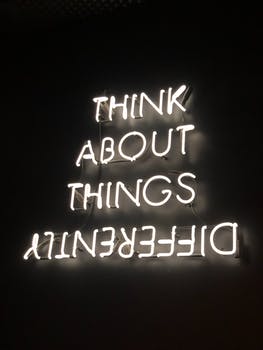Hi everyone,
Curriculum

Last semester I created a piece of curriculum for an entry-level course within colleges or universities. My psychology course was primarily written for those aged between 18 and 60 years of age.
Presentation

The curriculum was primarily taught through the use of PowerPoint presentations where I used a voice-over to comment on the important sections of each slide. There were no significant educational pre-requisites to take the course beyond having a grade 12 diploma besides having basic artistic knowledge.
Subject

The specific subject area of this piece of curriculum focused on human psychology. My psychology course was designed to be taught in-person but on account of the current COVID-19 Pandemic, I allowed for the course to be taught in a blended or full online method since each unit was presented using PowerPoint slides.
Expectations

It was expected that between 15 and 30 students would attend my course in human psychology. The primary learning challenges presented to me revolved around whether some of my students lacked creative ability. It would be my interest to possibly re-shape the course to include poetic or written means of expression rather than singularly depending on drawing or art as an expression of learning.

Best,
Carson 🙂
References
CAST. (2018). The UDL guidelines (version 2.2). http://udlguidelines.cast.org/



One component of the UDL guidelines which I would like to integrate into my curriculum is the expression component. It would be my goal to direct each student towards multiple tools for composition within the psychological learning objectives. I envision the action and expression component being exercised by providing my students with art supplies, writing supplies, and creative writing options rather than just using art as a means of educational expression (CAST, 2018).
The first thing that struck me reading your post, this relates back to last week’s reading by Mayers, and the Principle of Redundancy. Why did you select to include the images you did in your post?
Now back to UDL 🙂
Did you align your course design to existing UDL guidelines laid out by the colleges or universities?
I would suggest using multiple media for communication, although PowerPoint presentation with voice-over is a well-used and practical method of course delivery, I think additional media resources that might also incorporate an interactive component can help learners and also increase comprehension.
Hi Monika, I chose this particular selection of images because they related to the written content I provided as we were to ensure that we did not include images which were not related to written content. I chose to align my course design to existing UDL guidelines provided to me by TRU. I too agree that it is important for me to include multi-media resources! PowerPoint is a platform which I have much experience with and I too feel that the voice-over is very practical and accessible for most learners.
Best,
Carson 🙂
Hi Carson,
I have also been a part of a curriculum development team, so it was nice to hear that someone else has experience working in this field! I am curious as to how you developed your learning outcomes for your curriculum, and what aspects of UDL you feel your learning outcomes were best attuned to?
Alana
Hi, Alana,
I chose to develop my learning outcomes primarily based on the idea that I did not want to impose/coerce students into completing rote learning objectives which were not akin to their own interests. The majority of my learning objectives were based on self-reflection/self-assessments so that students were able to learn whether they achieved their own goals or not.
My creation of learning objectives which focused on student autonomy (self-assessment) ensured that I reinforced the UDL principle of engagement while my learning objective focus on multiple means of creative expression (poetry, creative writing, painting, drawing) ensured that my students were exposed to the UDL principle of action & expression which allowed for their own independent expressions. These are two example of how I included UDL in my learning objectives 🙂
Best,
Carson 🙂
Hi Carson,
I think the expression component of UDL is both the most intriguing and terrifying! In a recent Science lesson, I asked students to demonstrate the immune system. Giving them autonomy to choose (with a few suggestions) how they wanted to conduct the activity was terrifying. Some students decided to make a poster or a PowerPoint presentation. Others made board games, memory matching cards, jigsaw puzzles, news reports, and even a diary. One student started to write a song, abandoned the idea to author a poem, before finally settling on a comic strip! Another pair of students approached me with the idea of making a sculpture using Tinker CAD. Students were engaged, mostly eager to share their ideas, and visibly pumped to experience their peer’s demonstration.
All the best,
Tiernan
Hi there Tiernan,
Thanks for sharing with me some of your own experience with the UDL principle of expression! It truly sounds like your students brought out their own unique interests! I bet that that was a bit of shock. Sounds like when we allow freedom of expression, it is both students and educators who are challenged to explore and create afresh.
Carson 🙂
Hi Carson
Love the graphics you used in your portfolio, especially the ‘Think about things differently’. I work in alternative education, so this message resonates with me. Re: UDL incorporation, the inclusion of art and poetry would definitely expand your students’ means of expression. I am also wondering if you might also include computer based art or graphics modification. My students are younger than yours, but they really like having a creative computer option for their assignments.
Best of luck with this
Jim
Hi Jim,
I appreciate that you enjoyed how I connected the images to my written content. That was my goal, so it feels good to see it pay off. I enjoy the idea of including digital art as a means of student expression, I feel that I would need to ensure that we would have computers with art software installed. Sounds like a challenge, but maybe this is something I can look into for the future.
Carson 🙂
Hi Carson,
I once took at online paced graduate-level course on Student Development Theory. In the course, there was an assignment to describe our spiritual development. It was the first time I had experienced an instructor providing multiple means of action and expression. At first, I was bumpuzzled to see eight options for how we could complete the assignment. Unfortunately, I cannot find the original syllabus, but from what I recall from seeing other students’ projects, options included to write a reflection paper, compose and perform a song, develop and deliver a presentation, compose and perform a dance, create a collage, create a conference poster, make a podcast, or create a short comic book. I remember wondering how the instructor could evaluate a dance versus a paper, but as I am learning about developing clear learning objectives, I think this is achievable. Perhaps the examples from this course will provide you with more options for your students to express and communicate their learning, including dance!
Best,
Gena
Hi Gena,
Sounds like an incredible experience for a graduate course! Having such a wide-range of options for the completion of an assignment or final project seems to open so many creative avenues. I once read that dance is a symbol of transformation, so it makes me think about evaluating a dance in terms of what the dancer is attempting to embody. Are they seeking to embody teaching, learning, depression, happiness, marriage?
Thanks for sharing with me.
Carson 🙂